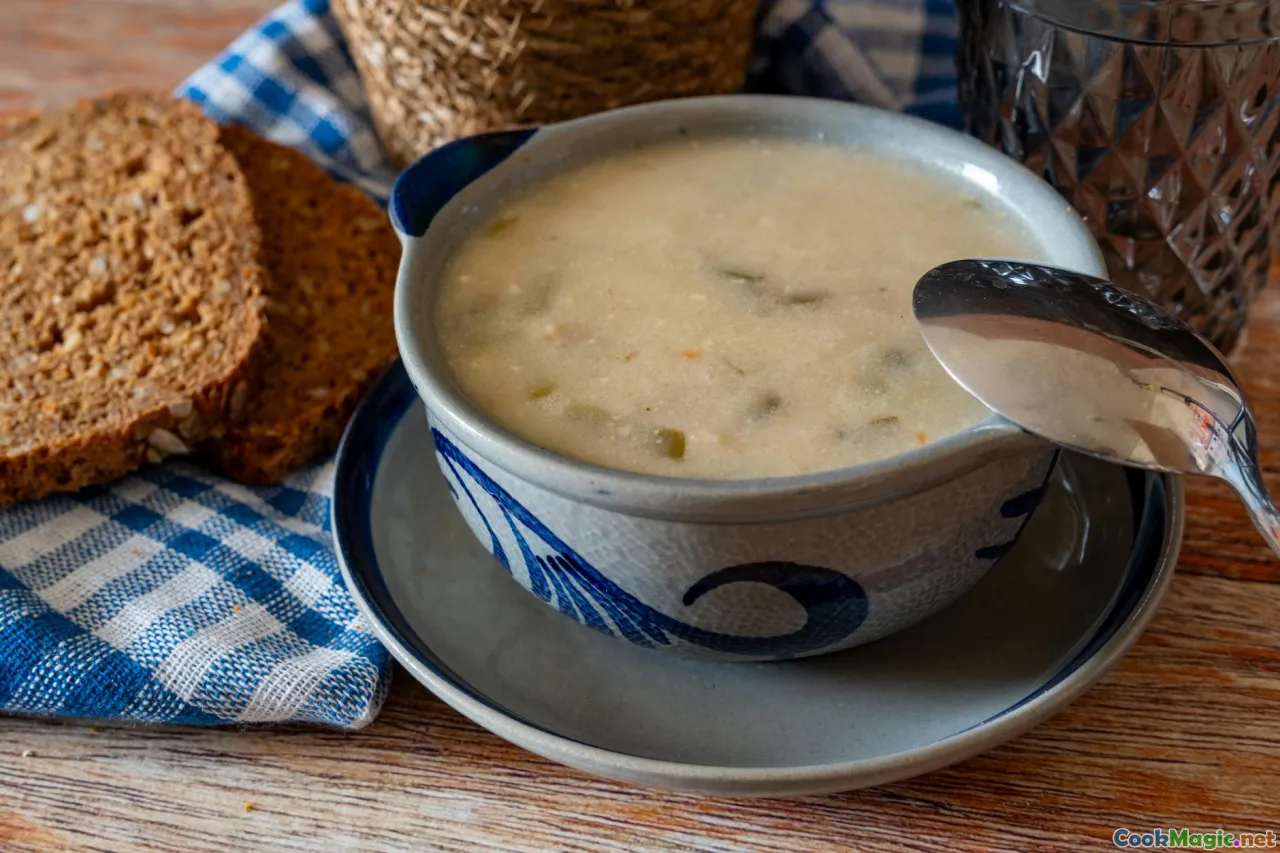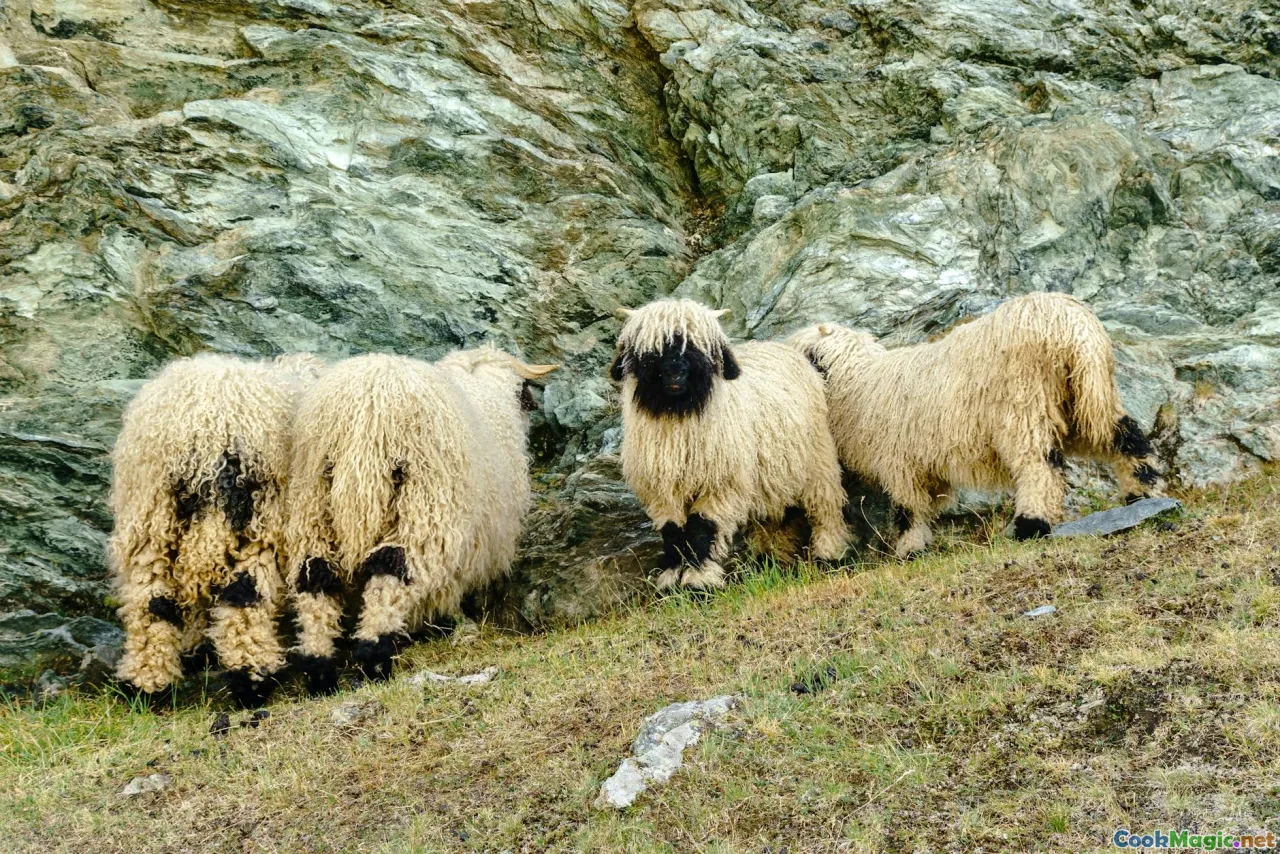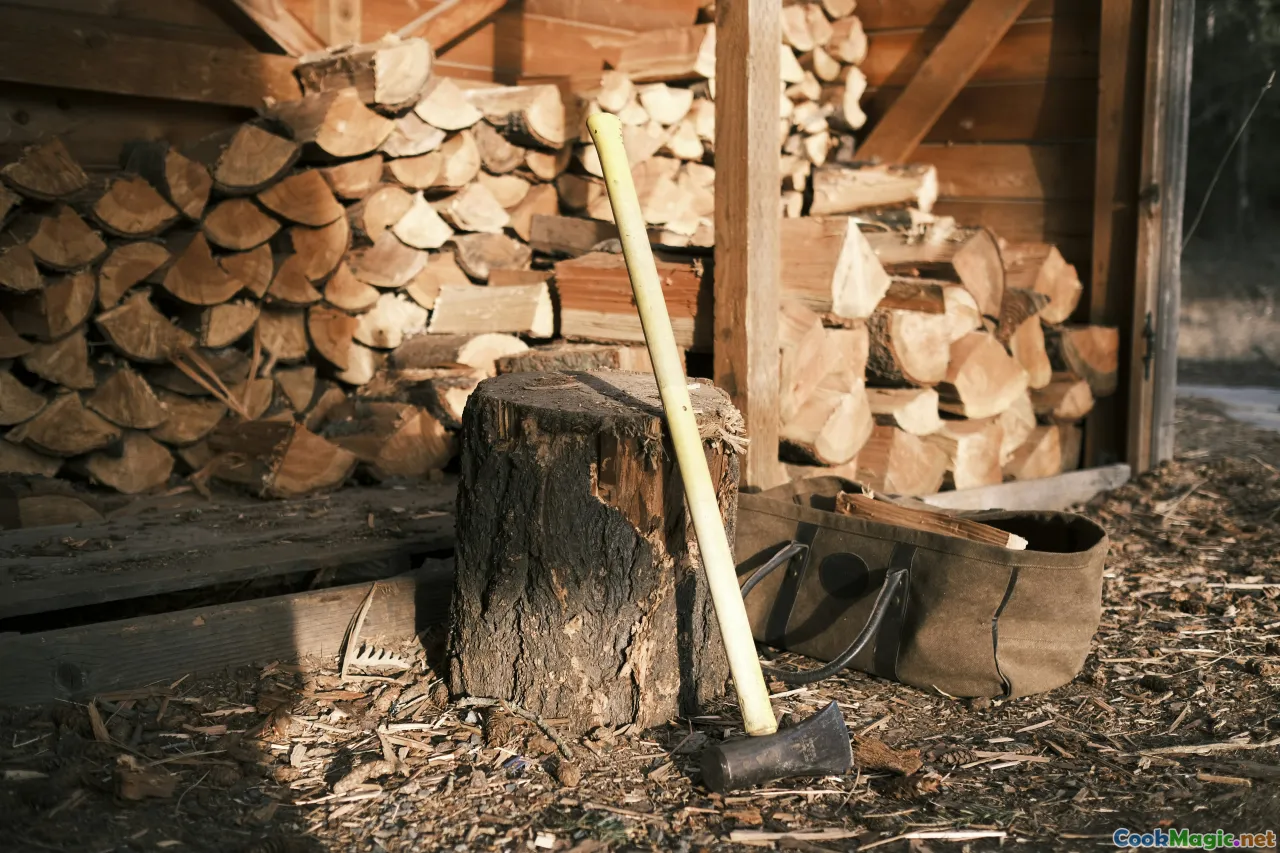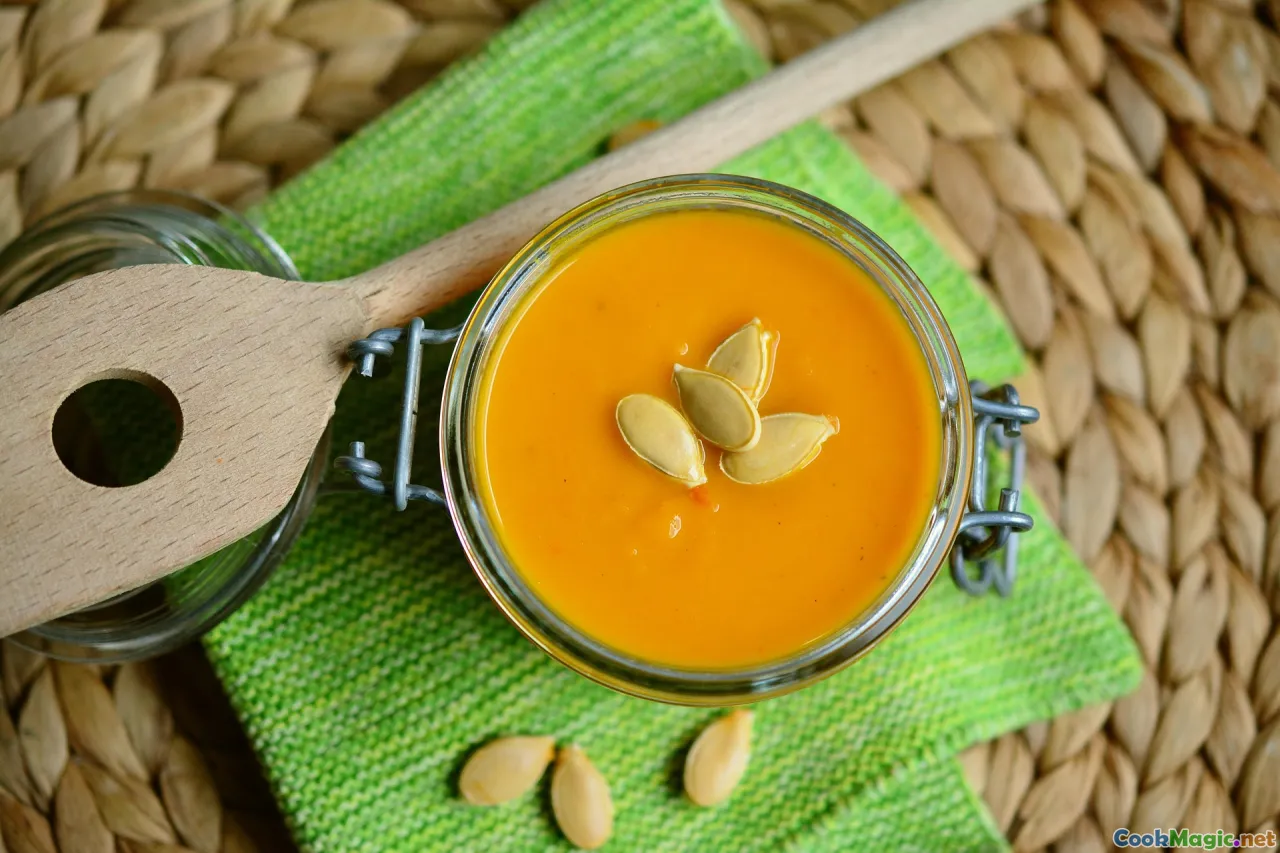Shepherd style trahana soup warming winter staple
33 min read Discover shepherd-style trahana, a tangy fermented grain soup that warms Albanian winters—history, techniques, regional twists, and tips for achieving silky texture and deep, rustic flavor. November 01, 2025 07:05
The first time I tasted shepherd-style trahana soup in the Albanian highlands, the snow was throwing quiet punches against the window and the hearth was snapping like a mischievous child. A copper pot hung over the embers, and the air was layered with the tang of sour yogurt and the sweet, nutty perfume of slowly browning butter. A shepherd—skin weathered like old leather boots—whisked a fistful of pale granules into a bubbling stock and smiled the smirk of someone who knows exactly what comfort should taste like. The first spoonful was velvet and fleece: tart and milky, warm and earthy, with a sting of red pepper and cooling mint in the finish. To this day, I can’t smell melted butter without hearing the crackle of that fire.
What “Shepherd-Style” Means in Trahana

In Albania, you’ll find many renditions of trahana (trahanë, as some grandmothers say), but shepherd-style is a sensibility more than a rigid recipe. It’s the mountain shorthand for a soup that leans on what a shepherd could realistically carry or source in a remote stan (alpine summer pasture hut): dried trahana granules, a hunk of brined white cheese, a pot of stock or water, and a small stash of spices. If there’s sheep’s milk yogurt (kos deleje) to hand, even better. If there’s butter, it’s almost always true butter—gjalpë—sometimes sheep or goat, melted until it turns hazelnut-brown and perfumed with crushed red pepper, a little garlic, and dried mint.
Trahana itself is both pantry and memory: a dried, fermented mash of wheat and dairy—most commonly flour or cracked wheat mixed with yogurt or buttermilk. In late summer, families in Korçë, Gjirokastër, Pogradec, Dibër, and Tropoja spread it like thick mud across clean sheets or woven reed mats, letting it sour for days before rubbing it into pebbles and drying it in the sun. Those granules carry winter’s calories, tang, and comfort in a sack no larger than a pillow.
Shepherd-style is practical and stripped-down. The stock might be nothing more than water kissed with a leftover bone, a splash of dhallë (buttermilk), or the whey left from making gjizë (a ricotta-like whey cheese). The garnish is equally frugal: a spoon of gjalpë i skuqur (browned butter) hissed with paprika; a crumble of djathë i bardhë (brined white sheep’s cheese); a sprig of dried nenexhik (spearmint). It’s the soup built by weather, distance, and animal milk—sourced, stirred, and sipped where roads thin and the sky feels close.
A Winter Bowl with Deep Roots

The lineage of trahana threads across the Balkans and Anatolia like a well-worn mule path. The word flits between languages—tarhana in Turkish, trahanás in Greek, trahana in Albanian—and in each place it picks up a slightly different costume. In Albania, it is distinctly simple: wheat and cultured dairy, the tang coming mostly from time and lactic acid bacteria rather than a brigade of vegetables or tomatoes. If tomatoes arrive, they arrive modestly, in a southern house with Epirote ties, turning the granules the color of a late sunset. But in many Albanian kitchens, trahana stays pale, its sourness gentle and clean.
There’s a ritual to it. In late August, at the old bazaar in Korçë, you’ll see sacks of dried trahana piled like sand dunes beside jars of mountain honey and coils of dry sausages. I once watched a vendor rub the granules between his fingers with a merchant’s pride, nodding toward the sky: “The sun did this.” His mother made that batch with kos (yogurt) from sheep that grazed near Dardhë; the dairy’s perfume—pine, thistle, and a touch of the wild—breathed through the bag when he untied it.
Historically, trahana stood where refrigeration didn’t. Fermentation insulated the grain with acidity, warding off spoilage, while drying secured shelf life. A shepherd could carry weeks of potential soup in a lightweight sack. In the villages of Gjirokastër, I’ve heard elders call it the “first snow soup,” because once the rooftops went white, an extra portion was stirred into the pot and the butter sizzle got more generous. In Tropoja, I was told it tastes best after a day in the woods collecting firewood, when your arms are sore and the soup has to boldly fill the cracks.
The Texture and Taste Map of Albanian Trahana

If you’re new to trahana, think of it as a savory, tangy porridge that lands somewhere between soft polenta and velvet risotto. The granules swell as they simmer, releasing starch that pivots from chalky to plush within minutes. With shepherd-style trahana, the broth often gets a lift from the dairy, a little cloudiness, and a glow of gold where the butter trails.
On the nose, there’s warm hay and yogurt tang, something like the breath of an Alpine meadow captured in steam. On the tongue, the first impression is tart—gently so—but the body is rounded, nutty from the toasted grain and enriched by the butter. The finish is where the drama happens: paprika’s sweetness, a distant pinch of heat, and the herbal coolness of dried mint. A crumble of djathë i bardhë adds saline brightness, while crushed garlic whispers rather than shouts when it’s diffused in hot fat.
Mouthfeel matters. A properly cooked bowl should be spoon-coating but not cement; the granules should retain a barely-there bead in the center, not mush. A good shepherd reads weather into the pot: on a biting day, the soup might be thicker, almost a caress you can stand your spoon in; on a mild afternoon, slightly looser, steamy and silken.
Ingredient Deep Dive: From Kos Deleje to Gjalpë i Skuqur

-
Trahana granules: Seek Albanian-style, pale and dairy-fermented, with a scent of yogurt and wheat. The best bags often come from households, not factories. If buying packaged, look for “trahana e bardhë” (white trahana). The granules should be dry, crumbly, and irregular; powdery indicates over-drying or smashing.
-
Dairy: Kos deleje (sheep’s milk yogurt) yields the deepest tang and a plush texture. Goat’s milk yogurt is a worthy stand-in; cow’s milk yogurt produces a milder soup. Some households stretch the dairy with dhallë (buttermilk) or use whey from making gjizë—lending a gentle sour glow.
-
Stock or water: Shepherd-style is opportunistic. Water with a meaty bone is ideal; lamb necks or shanks, simmered long and slow, produce the kind of broth that loves trahana. Even a basic vegetable broth—sweetened with carrots and leeks—can cradle the grain.
-
Butter and fat: Gjalpë i skuqur is the heartthrob here. Melted slowly until it deepens to golden brown, then stitched with paprika, a little garlic, and dried mint. You’re after a nutty, fragrant oil that slicks the surface and perfumes every spoon.
-
Herbs and heat: Dried spearmint (nenexhik) is traditional; it softens the yogurt’s sourness with a green cool. Red pepper—either sweet paprika or a mix that includes a pinch of djegës (hot pepper)—is common. In northern homes, you might catch smoked paprika, a nod to the autumn pepper roasts that perfume entire valleys.
-
Cheese: Djathë i bardhë (brined white cheese of sheep or mixed milk) crumbled on top, or a spoon of gjizë, adds creaminess and salt. Some shepherds carry a hard, aged wedge; a few shaved curls turn the bowl glossy and savory.
Shepherd’s Morning: A Field Story from the Stan

On a morning above Puka, the clouds sat low on the shoulders of the hills, and the ground had that brittle crunch of real cold. We ducked into a stan where the walls were quilted with cloth sacks, each stitched with the names of flocks. The pot was already half full—yesterday’s broth, flecked with fat, waiting to be awakened. From a canvas bag, our host sprinkled in a palm of trahana, and the granules sank like shy fish.
He didn’t measure; he read the pot. A whorl of steam spooled into the air as he whisked with a fork fashioned from a branch. He asked us about our families while watching the surface for those first coy bubbles that say it’s time to slow down. Out came a small tin of butter—yellow as sunflowers—then a pinch of ground red pepper and dried mint crumbled between his fingers into the sizzling pool.
The butter hissed and sighed as it met the soup. A smell you would call “home,” even if you’d never been there, stepped forward. He ladled bowls, crumbled a tight-fleshed slice of djathë i bardhë over each, and pushed a plate of pickled cabbage toward us. My first sip steamed my glasses, and when they cleared, the world was exactly as warm as the bowl in my hands.
How to Make Shepherd-Style Trahana Soup (Step by Step)

This recipe channels a mountain pot into a home kitchen. It serves 4 generously.
Ingredients:
- 120 g Albanian white trahana (about 3/4 cup), preferably coarse
- 1 liter light lamb or chicken stock (or water with a bone)
- 250 ml sheep’s milk yogurt (or plain whole-milk yogurt), room temperature
- 40 g unsalted butter (about 3 tablespoons)
- 1 small garlic clove, crushed to a paste with a pinch of salt
- 1 to 1 1/2 teaspoons sweet paprika (plus a pinch of hot pepper if you like)
- 1 teaspoon dried spearmint, crumbled
- 100 g djathë i bardhë or feta, crumbled
- Salt to taste
- Optional: a squeeze of lemon for brightness if your yogurt is very mild
Method:
-
Pre-warm the dairy: In a small bowl, whisk the yogurt with a ladle of warm stock to temper it. This keeps it silky and prevents curdling later.
-
Toast the granules (optional but lovely): In a dry saucepan over medium heat, stir the trahana for 2 to 3 minutes until it smells like toasted bread. Don’t brown it—just coax out the nuttiness.
-
Simmer the base: Bring the stock to a gentle simmer in a medium pot. Whisk in the trahana in a steady rain to avoid lumps. Drop the heat to low and stir often, scraping the bottom, for 12 to 15 minutes until the granules are plump and the broth is creamy. You want a gentle blip, not a furious boil.
-
Enrich with yogurt: Stir in the tempered yogurt. Keep the heat low and cook 3 more minutes, stirring. Avoid boiling once the dairy is in; you’re coaxing silk, not splitting it.
-
Taste and adjust: Salt thoughtfully—it depends on your stock and cheese. If your yogurt is very mild, a few drops of lemon adds a playful spark.
-
Make the butter sizzle: In a small pan, melt the butter over medium heat until it turns deep gold and smells nutty. Pull from the heat and immediately stir in the garlic paste, paprika, and dried mint. The spices should bloom but not burn.
-
Serve and finish: Ladle the soup into warm bowls. Spoon the spiced butter over each, letting it marble into the surface. Add a handful of crumbled djathë i bardhë. Eat hot, with pickles and a heel of bread.
Notes:
- Ratio: A rough ratio is 1 part trahana to 8–10 parts liquid, but granule size varies. Adjust on the fly; you’re aiming for spoon-coating.
- Fast day version: Use olive oil instead of butter and skip the dairy, or replace yogurt with a splash of dhallë. The soup will be leaner, herb-forward, and equally comforting.
- For a more “shepherd on a ridge” feel: Use water, a bone, and a little whey in place of stock; top with minty butter and cheese.
From Scratch: Fermenting and Drying Your Own Trahana

Homemade trahana tastes like the place it comes from. The yogurt you use, the sun that dries it, and the cloth you rub it on all impart subtleties you can’t buy in a bag.
Ingredients for a small batch:
- 1 kg wheat flour (or 700 g flour + 300 g coarse semolina for texture)
- 700–800 g sheep’s milk yogurt (or a mix of yogurt and buttermilk)
- 10 g fine salt
Method:
-
Mix and ferment: In a large bowl, combine flour and salt. Add yogurt, kneading until you have a thick, sticky dough—think wet pasta dough. If it’s too dry, add yogurt by the spoonful. Press into a low, wide bowl, cover with a cloth, and leave at cool room temperature (18–22°C) for 48–72 hours. Once a day, knead briefly to redistribute the microbes and even the acidity. You want a pleasant tang, not full-on sour.
-
Spread to dry: Line a tray or clean sheet with a light dusting of flour. Press the fermented dough into a thin blanket, about 1 cm thick. Set in a breezy, shaded place for a day to firm up. Avoid direct scorching sun at this stage; you want it to dry, not crust prematurely.
-
Rub into granules: Tear the sheet into pieces and rub them between your palms or across a coarse sieve over a large tray. You’ll create pebbles and dust—both useful. Spread the granules in a single layer and return them to the drying spot.
-
Sun and stir: Over 2–3 days, toss the granules occasionally, letting them dry fully. They should feel hard and rattle when shaken. In humid climates, finish in a very low oven (50–60°C) with the door cracked, stirring every 15 minutes.
-
Store: Keep in an airtight sack or jar. Label the batch with the month and the yogurt used. Like a good story, trahana gets a little more mellow with time.
Shepherd tip: If you plan to use trahana primarily in winter soups, rub some of the batch coarser; coarser granules hold their bead longer and produce a fuller mouthfeel.
Science of Comfort: Fermentation and Heat

Why does a bowl of trahana land so squarely in the body’s comfort zone? Some answers lie in the very small and the very hot.
-
Fermentation: Yogurt brings lactobacilli to the party. During the 2–3 day rest, these bacteria nibble at lactose and release lactic acid. That acid tang not only preserves but also heightens flavor perception—acidity is a flavor amplifier. It sharpens grain’s sweetness and unlocks a faint fruitiness in the wheat.
-
Protein and starch: As trahana cooks, starches gelatinize, thickening the liquid into a silken network that traps fat. The yogurt’s proteins denature and set gently below a boil, contributing body. This is why low, careful heat yields the creamiest spoon.
-
Browned butter: Milk solids in butter caramelize (Maillard reactions), generating nutty, toffee-like compounds. When you bloom paprika and mint in this butter, fat-soluble flavor molecules dissolve and spread, painting the entire bowl with warmth.
-
Temperature and aroma: Volatile compounds in mint and garlic get lively when warmed. Take a mouthful and the aroma cranes toward your nose, completing the flavor circuit. This is why a hot soup tastes “complete” in a way a tepid one rarely does.
Regional Voices: Korçë vs. Gjirokastër vs. Tropoja

Ask ten Albanian cooks to define trahana, and you’ll get eleven answers.
-
Korçë: Often pale and wheat-forward, with a reverence for sheep’s dairy. Many families finish the soup with gjalpë i skuqur and a modest snow of djathë i bardhë. The stock is clean and light, occasionally a simple water-and-bone affair, to let the tang ring.
-
Gjirokastër and southern valleys: You’ll sometimes find “red” trahana in the market—tinted with sweet peppers or a blush of tomato. The soup may lean more aromatic, occasionally welcoming a whisper of oregano alongside mint. Households with Epirote roots garnish fearlessly with pepper butter.
-
Tropoja, Puka, Dibër: Coarser granules are common, and some families mix in a little cornmeal for sturdiness. Smoking is part of the local culinary language, so a pinch of smoked paprika isn’t unusual. The soup is thicker—cold demands it—and pickled cabbage or green tomatoes come to the table without being asked.
-
Kosovo and the north-east: Look for a stronger hand with garlic and occasionally a meatier stock from lamb bones. The tang stays firm, and winter bowls often travel with a shot of raki to the table for, as one host winked, “medical purposes.”
Pairings and Serving Rituals

-
Bread: Kulaç misri (cornbread) is a natural partner; tear it into the bowl or swipe the edges clean. A crusty round baked under a saç gathers the butter like a good friend collecting stories.
-
Pickles (turshi): Crisp cabbage, green tomatoes, and slender cucumbers sharpen the soup’s richness. Their brine wrestles your palate awake between spoonfuls.
-
Cheese: A second sprinkle of djathë i bardhë never hurt a winter evening. If you have gjizë, a dollop dissolves into creamy ribbons.
-
Drink: Dhallë (buttermilk drink) makes a harmonious, tang-on-tang duet; red wine from the Korçë hills brings warmth; a small glass of raki puts a star in the soup’s sky.
-
Table: Serve at a low sofra if you can, bowls touching and elbows bumping, the steam twisting together like gossip. The first ladle goes to the eldest; the last scrape belongs to the cook.
Sourcing in Albania and Abroad

In Albania:
- Pazari i Ri (Tirana): Look for family stalls selling small-batch trahana in unassuming plastic bags with handwritten labels. Ask for “trahana e bardhë, e bërë në shtëpi.”
- Old Bazaar (Korçë): Vendors often know the pastures behind their product. Ask who made it and what milk was used. If you smell something like warm yogurt and hay, that’s your bag.
- Gjirokastër Pazar: Alongside carved stone and wool slippers, you’ll find trahana tucked between jars of mountain tea and sun-dried peppers.
Abroad:
- Balkan and Middle Eastern markets: Seek Albanian or Kosovar brands labeled in both Latin and Cyrillic scripts. Greek trahanás is common, but note that some Greek styles include egg or tomato—delicious but different.
- Online: Look for specialty shops that import Albanian pantry goods. If all else fails, choose a plain, yogurt-fermented trahana from neighboring cuisines and steer the soup with Albanian-style garnishes.
Dairy and cheese:
- Sheep’s milk yogurt can be found at well-stocked grocers or Mediterranean markets. If not, blend Greek-style yogurt with a little buttermilk to mimic the tang.
- Brined white cheeses labeled “sheep’s milk feta” often approximate djathë i bardhë. Taste for salt; some cheaper fetas can be harsh—rinse briefly if necessary.
Spices:
- Dried mint should smell green and cool, not dusty. Crumble it between your fingers; if it snaps brightly, it’s alive.
- Paprika with a sweet, full aroma will paint the butter with warmth rather than flat noise.
Troubleshooting and Tips from Cooks

-
Lumps: Whisk trahana into simmering liquid in a steady rain, not a dump. If lumps happen, take a stick blender to the pot for 5 seconds—no longer—or push a portion through a sieve and stir back in.
-
Too sour: Mild stock and a knob of extra butter blunt overzealous tang. A drizzle of hot butter blooming paprika mellows acidity. So does a larger crumble of cheese.
-
Too thin: Simmer a few minutes longer; trahana thickens as starch gelatinizes. If still loose, whisk in a spoon of additional trahana and cook 5 more minutes.
-
Too thick: Add hot stock or water little by little, stirring as you go. The soup is forgiving.
-
Curdling: Keep the heat gentle after adding yogurt. Temper dairy and avoid hard boils. If you do curdle slightly, it’s not the end—the soup will taste fine, just look rustic.
-
Reheating: Trahana sets as it cools. Reheat with a splash of water or stock, whisking to restore silk. Refresh the bowl with a new spoon of spiced butter; that last-minute perfume matters.
-
Make-ahead: The soup keeps 3 days in the fridge, covered. The granules themselves keep a year or more, stored dry and dark.
A Cook’s Notebook: Variations Worth Trying

-
Corn-kissed trahana (Tropoja echo): Swap 20–30% of the trahana with coarse cornmeal. Toast the cornmeal briefly before adding, and simmer a touch longer. The bowl becomes gently golden, earthy, and sturdier.
-
Red trahana (southern nod): Add a spoon of sweet red pepper paste to the butter and drop a swallowed flame into the bowl. If you’ve sourced red trahana granules, keep the stock very clean to let the color sing.
-
Fasting day olive oil: Warm olive oil with garlic, mint, and a pinch of paprika until fragrant but not smoking. Drizzle over a dairy-free trahana cooked in vegetable stock. The flavor leans grassy and bright.
-
Lamb-bone broth: Roast lamb neck bones lightly, then simmer with onion, carrot, and bay for a few hours. Strain, then cook trahana in this broth. The result is deeply savory, ideal for the coldest nights.
-
Yogurt-forward: Stir in extra sheep’s yogurt at the end for a tangier, creamy finish. Temper well and keep the pot shy of a simmer.
-
Herb garden: Dried spearmint is the classic, but a pinch of mountain oregano or thyme can play a supporting role. Keep the mint centerstage.
What I don’t recommend—if you’re chasing Albanian shepherd style—is egg thickening. Delicious in other traditions, it tips the bowl away from the quiet tang-and-grain conversation that defines this soup.
Why This Bowl Matters

In Albanian kitchens, trahana is one of those foods that sits squarely in the space between utility and love. It is a winter staple because it’s cheap, portable, nourishing, and resilient. But it’s also a staple because it tastes like care. The small labor of rubbing granules in late summer, the quiet hours of drying, the first snow day when the butter hisses—that’s a calendar only a lived-in kitchen can keep.
For cooks far from the mountains, a bowl of shepherd-style trahana brings the landscape to the table in ways that postcards never can. It’s the sour-sweet breath of sheep’s milk, the toast of grain warmed by last year’s sun, the riotous bloom of paprika and mint in hot butter. It is poverty and plenty, history and hunger, the hush of snow and the gossip at the sofra. And it asks very little of you beyond a gentle heat, a patient hand, and the willingness to ladle out something that whispers, in Albanian and in every language: you are warm, you are fed, you are home.









